Heritage of Euklides
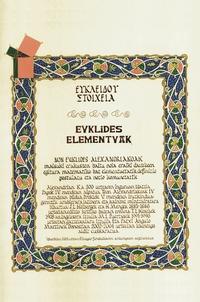
The book Elements of Euklides has a noteworthy mark: it is the most translated and published scientific book. As he wrote about three hundred years before the birth of Christ, he is older than all the books that make up the New Covenant of the Bible.
At the time of its writing, Alexandria was a very new city, even from the point of view of traditions; Alexander the Great, founder, died a few years earlier and a very special atmosphere arose in a new growing city. Among other things, a tendency arose to gather the wisdom that existed until then, when the famous museum and library were launched. In that environment Euklides wrote the book Elements, probably with the intention of creating a collection of mathematical advances of the civilized world. It was not the only one, because there was a whole school of mathematicians in Alexandria (Apollonius's work is also remarkable), but the book Elements is the one that has most influenced the world of science.
"It can be said that the work has covered the person. The elements have long been known, but we know less about the person," says Patxi Angulo, a mathematician who has translated the book into Basque.
And it is true. On the one hand, because of the importance of the book and, on the other, because we know little about Euclid himself. He lived in Alexandria and worked in the museum, where he wrote all his works, we know nothing more. Some say that it did not exist and that Euklides was not a person, but a school, as with Pythagoras.
Collection of books
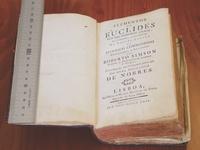
Being a man or a school, Euklides left a beautiful collection of mathematics, especially geometry. Elements is a collection of books. "The Greeks used to write the books like this," says Angulo. There are thirteen books that make up Elements, and each separately may not be enough to form a book. "In the Basque version we have completed some five hundred pages, but there are books of less than twenty pages."
In history, when the book has been translated or versions have been made, thirteen have not always been used. The first four, fifth and sixth, and the eleventh and twelfth are the most published. Surely they are the most practical and useful. But, according to Angulo, in addition to practicality, there may be other reasons for not using all chapters or books. "This also has to do with religion. For things to be well and well, there are parts that are not suitable from a religious point of view; they are too abstract and esoteric."
Perhaps, seen from current thinking, it is difficult to understand why, since the collection of books is full of very basic concepts of mathematics.
In the first four books and in the sixth the geometry of the plane is analyzed; in the fifth the proportions are analyzed; in books seven, eight and nine the theory of numbers is worked (the properties of numbers, for example); in the tenth the irrational numbers are analyzed; in the last three books, the geometry of space; in the eleventh and twelfth, the basic theorems are offered.
The thirteenth book is very special. Five regular polyhedra appear. But Plato took these polyhedra beyond current mathematical concepts, identifying regular polyhedra with elements of space: earth, sky, water, etc. Therefore, behind this idea there is a bit of mysticism, of perfection. For example, Plato said that the dodecahedron represents the whole universe, and that kind of thing. Perhaps, from the point of view of today's science, they are not very understandable things. But they are there.
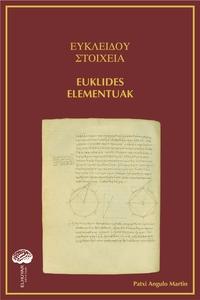
Euclidean life
However, most of the contents of the book Elements belong to the basis of geometry. And in our daily life we live in a euclidean space, in which we do any work at home, for example, all lines are perpendicular and parallel; we use triangles, circles and flat forms like these. All this is a euclidean geometry.
On the one hand, euclidean geometry studies plane geometry: triangles, squares, circles, Pythagorean theorem, direct parallel theorems of Thales, etc. On the other hand, it is included in the geometry of space, as cones, cylinders, spheres and relations appear between them.
"Another thing is how it is taught in school," says Angulo. "Some theorems or properties are taught, others pass or at least are not taught this way, or are not very important today. But basic mathematics is there, we learn in school."
Description
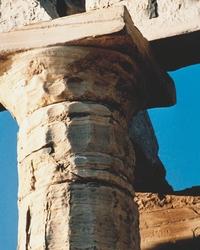
We are not the only ones who have learned the geometry of Euclid in school; in educational texts it is a classic that has spread to many places and times through the book Elements. Sometimes the full text has been used, but in most cases content has been deleted or added. Or rather, removing and adding content, both together.
No wonder in a book written 2,300 years ago. In fact, it seems impossible for an unchanged version to remain so long. The original book was lost, but throughout history some people used the book, or parts of it. Although it was not the whole book, they transmitted their parts. Proof of this are Proklo and Teon Izmirn. In addition, the book was used by numerous Arab writers. The Arabs recovered the original texts, not the true papyri, but collected many manuscripts that, at least, were not lost.
The book was used in schools during the Middle Ages and in the XIX. Until the twentieth century it has also been a textbook, but moved to every age and type of society, adapted. XIX. However, an exhaustive study was conducted in the 20th century to identify the original text. In fact, the Danish Heiberg distinguished between what he himself had left and subsequent contributions. And he translated the material from Euklides into modern Greek. This work is based on what is left of the original text of Euklides. He distributed what was written by Euklides and later added it. There are always doubts; it seems that notes were added, even theorems that the original did not have, and that sometimes the explanations were extended or added. It is difficult to discern all of this, but today Heiberg's work is based on it.
Now, taking as reference the work of Heiberg, the mathematician Patxi Angulo has translated into Basque Elements. Therefore, the old book continues to advance through more translations and publications. It is possible that the book has a validity of 2,300 years more, what we know is that it remains a reference of the moment.
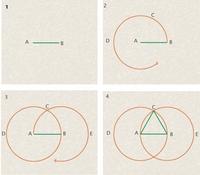
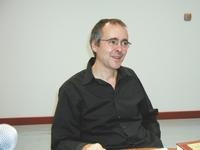

Buletina
Bidali zure helbide elektronikoa eta jaso asteroko buletina zure sarrera-ontzian











